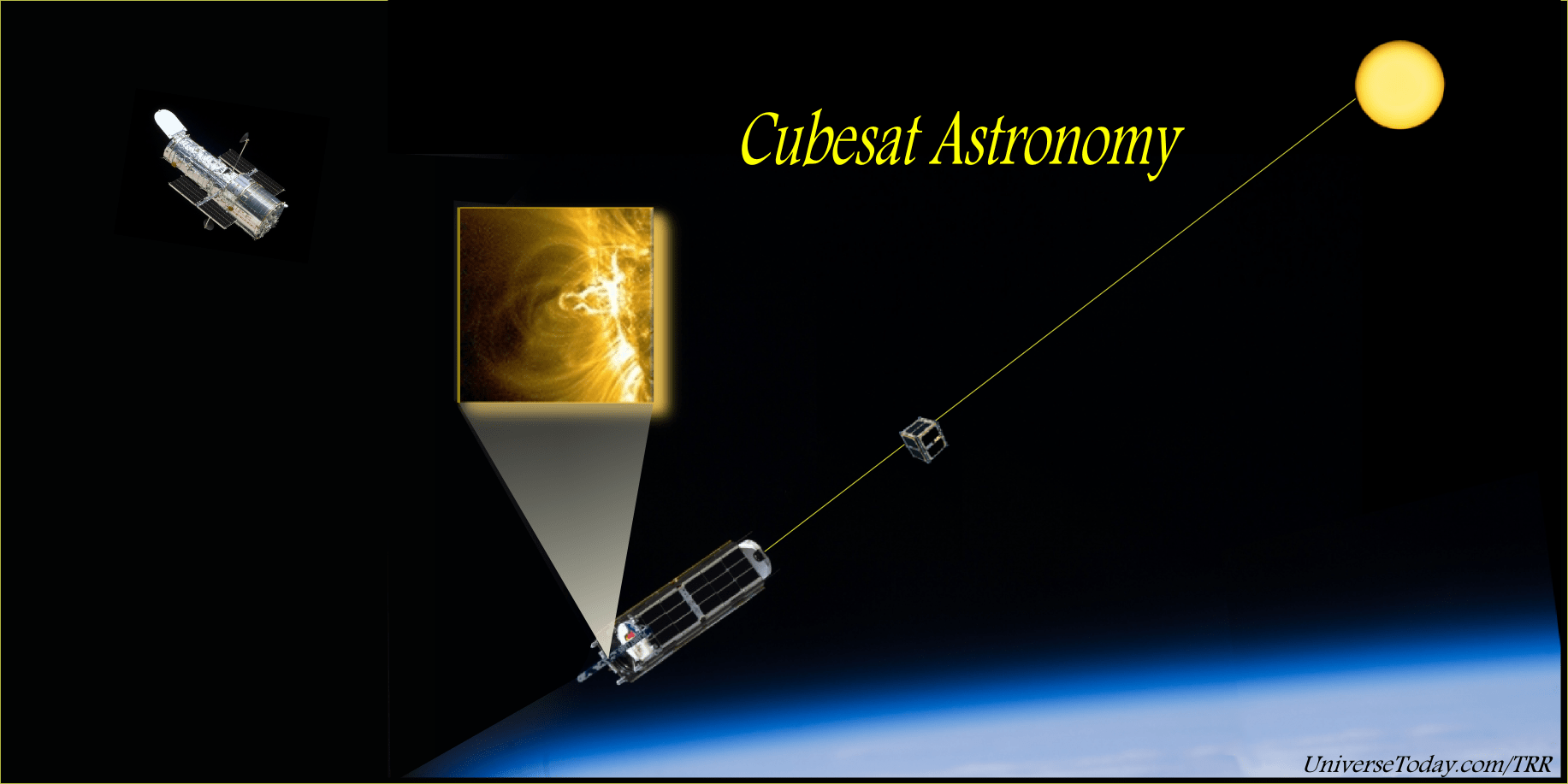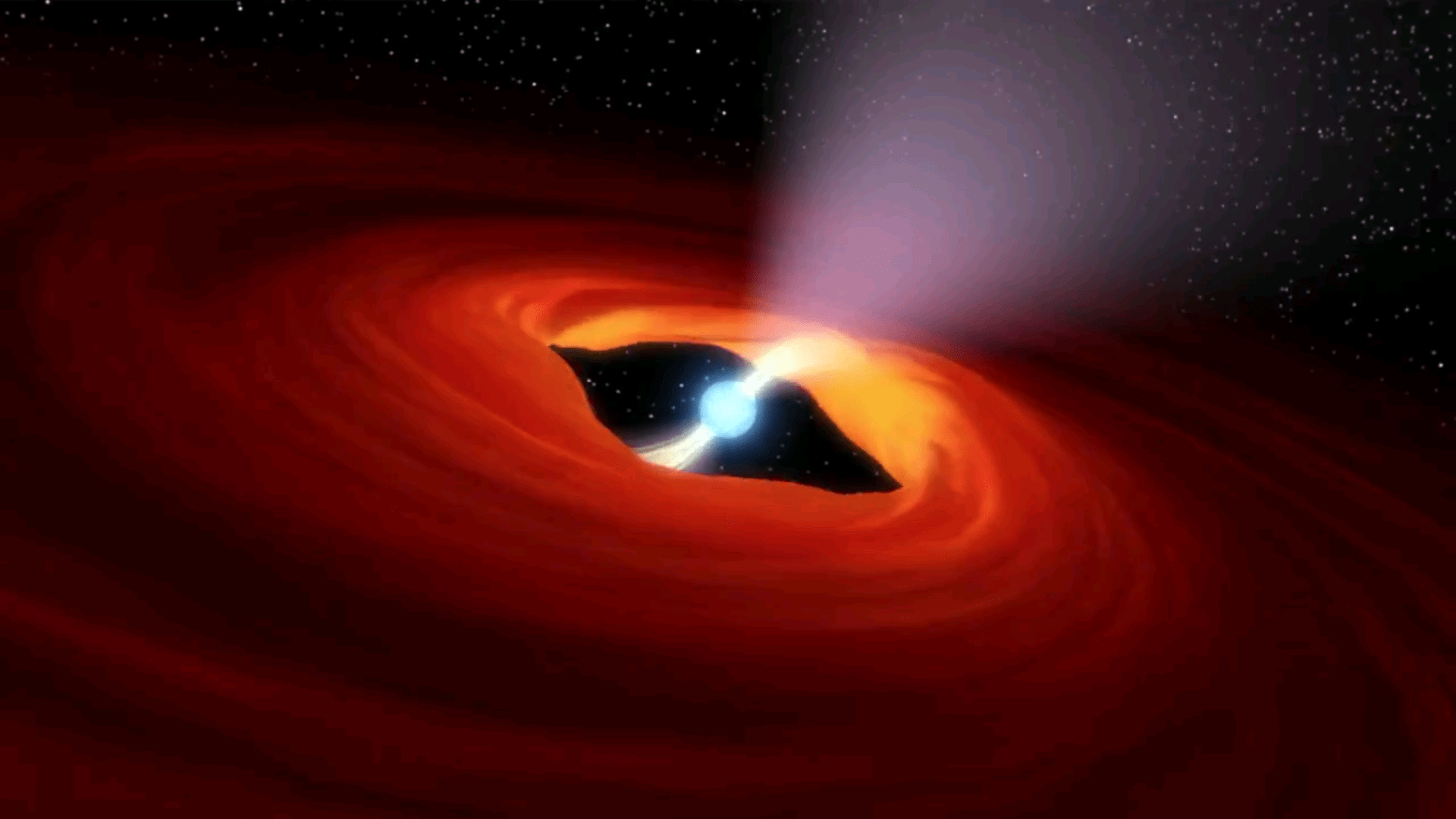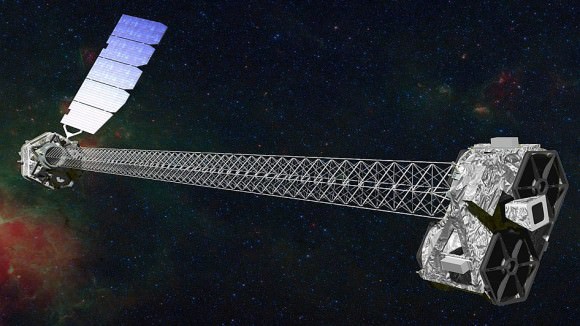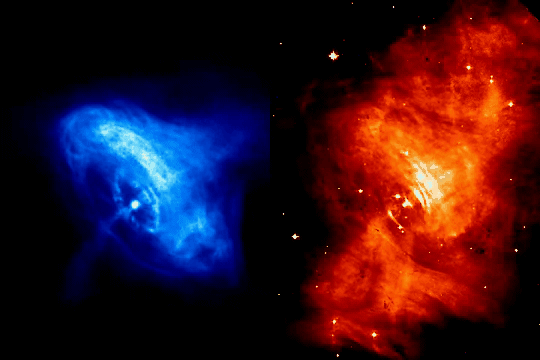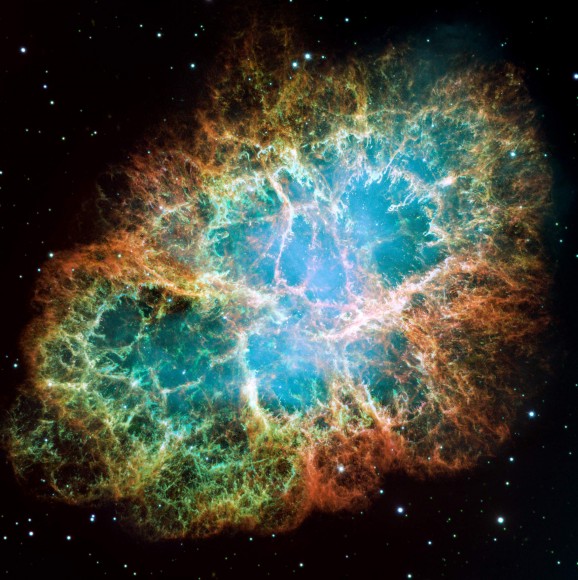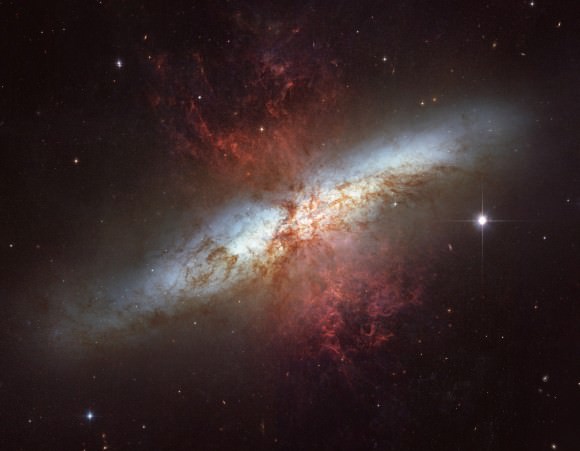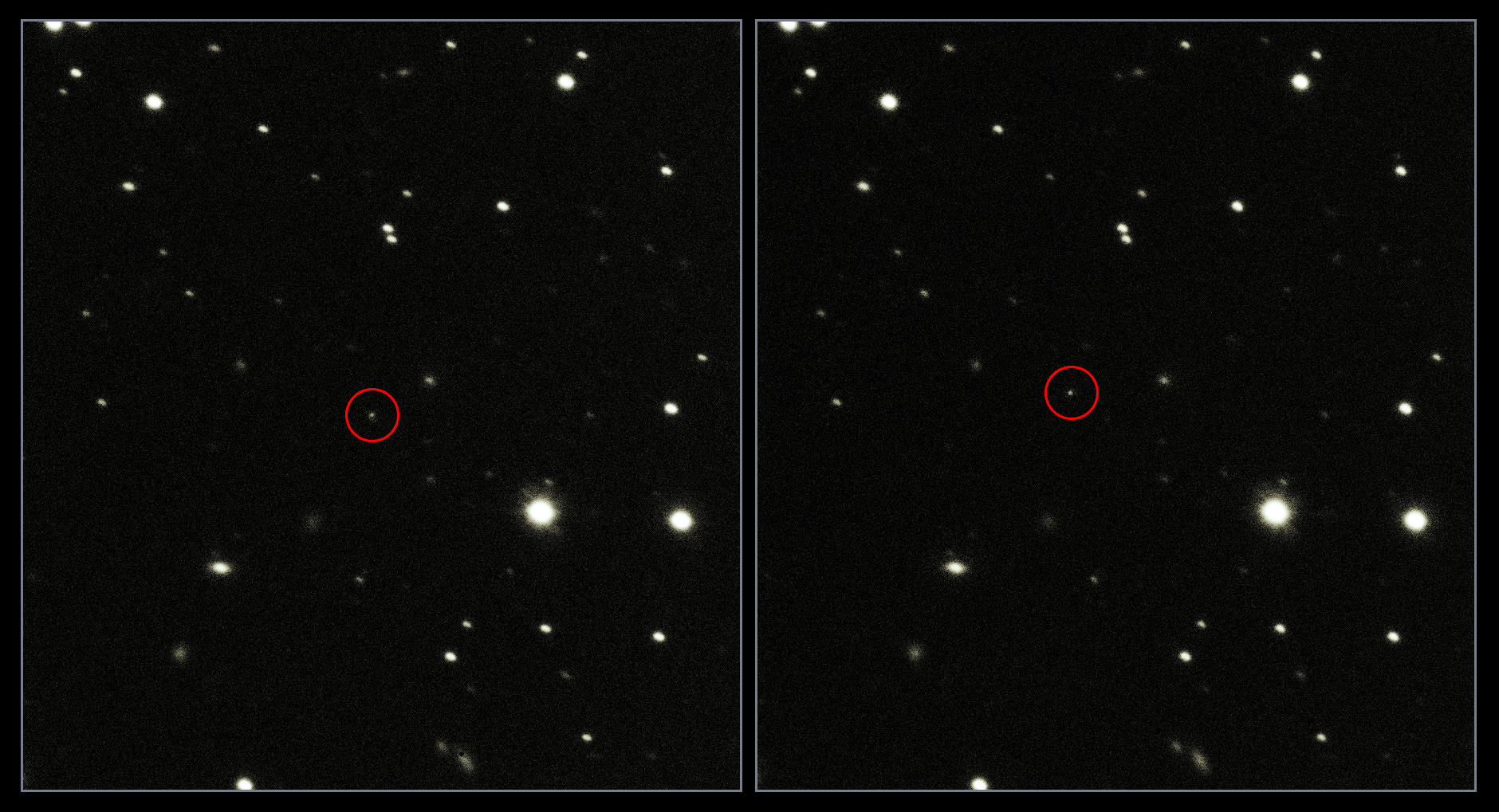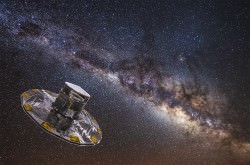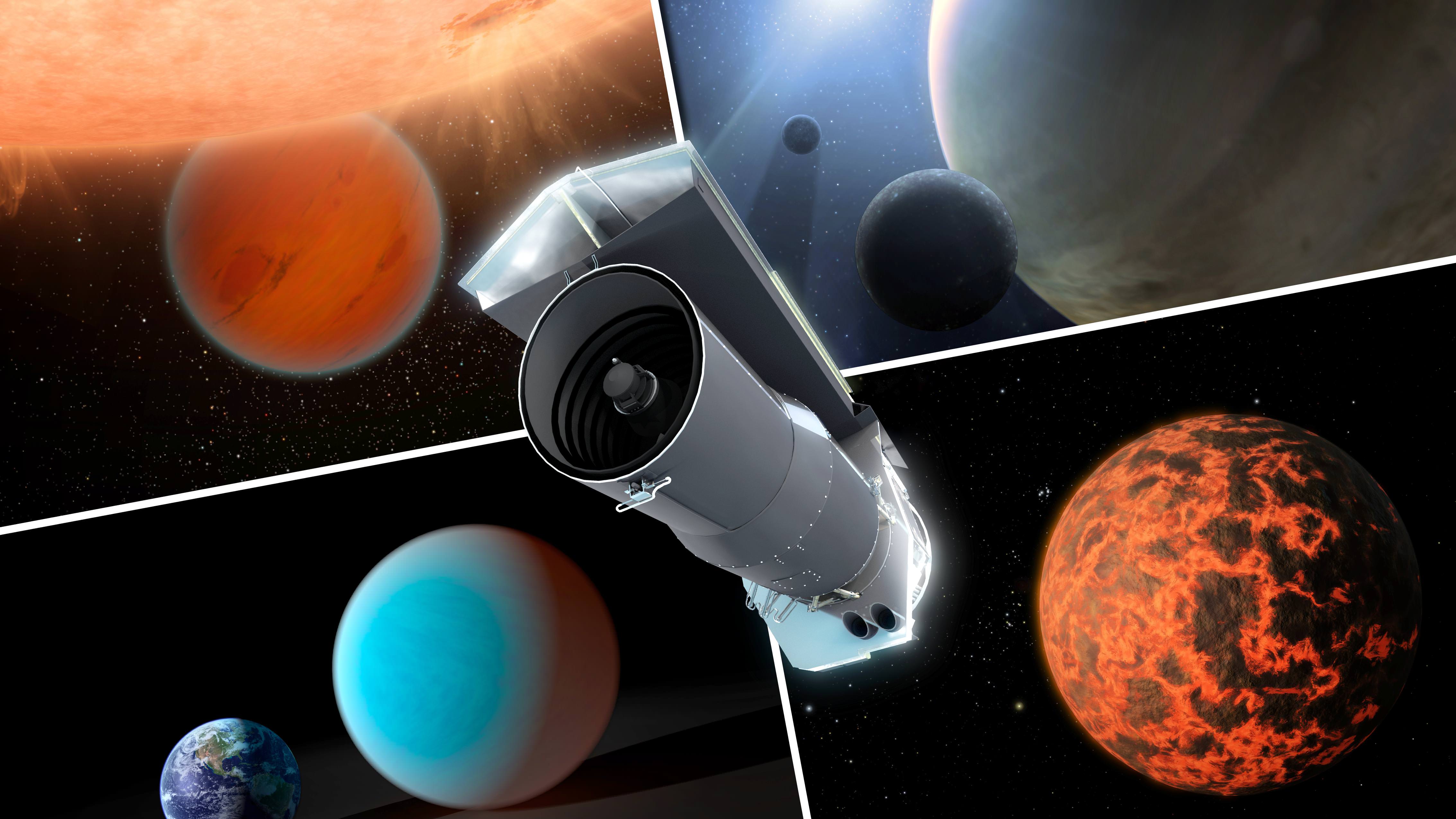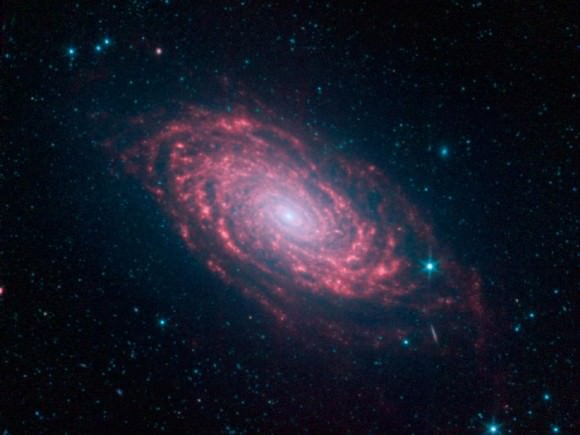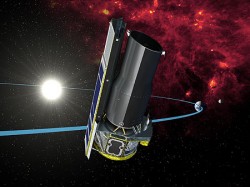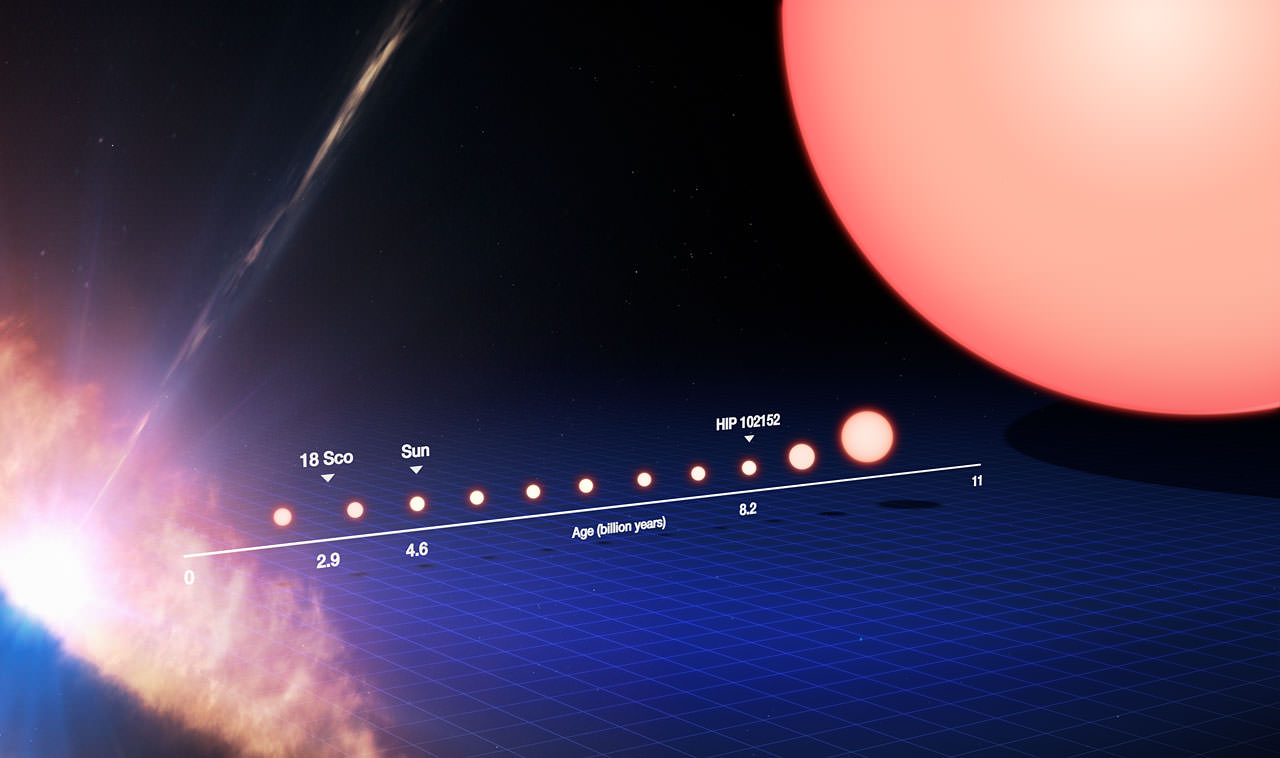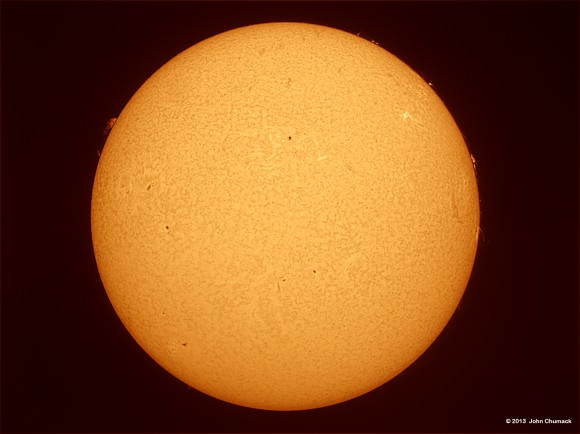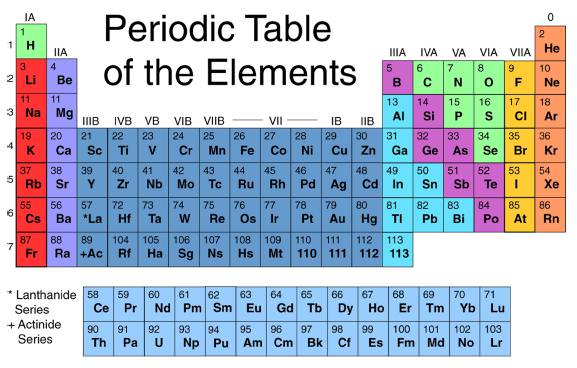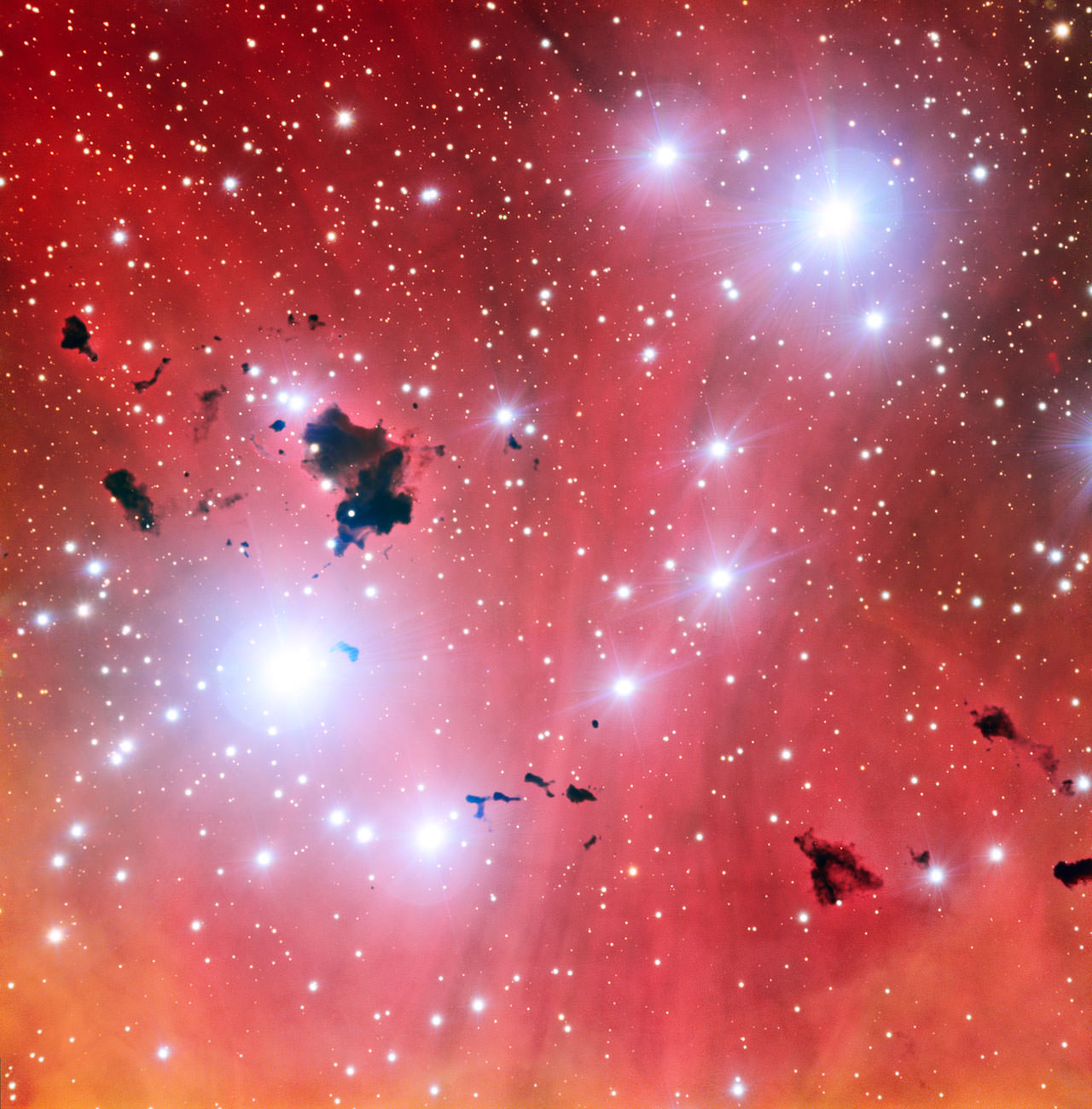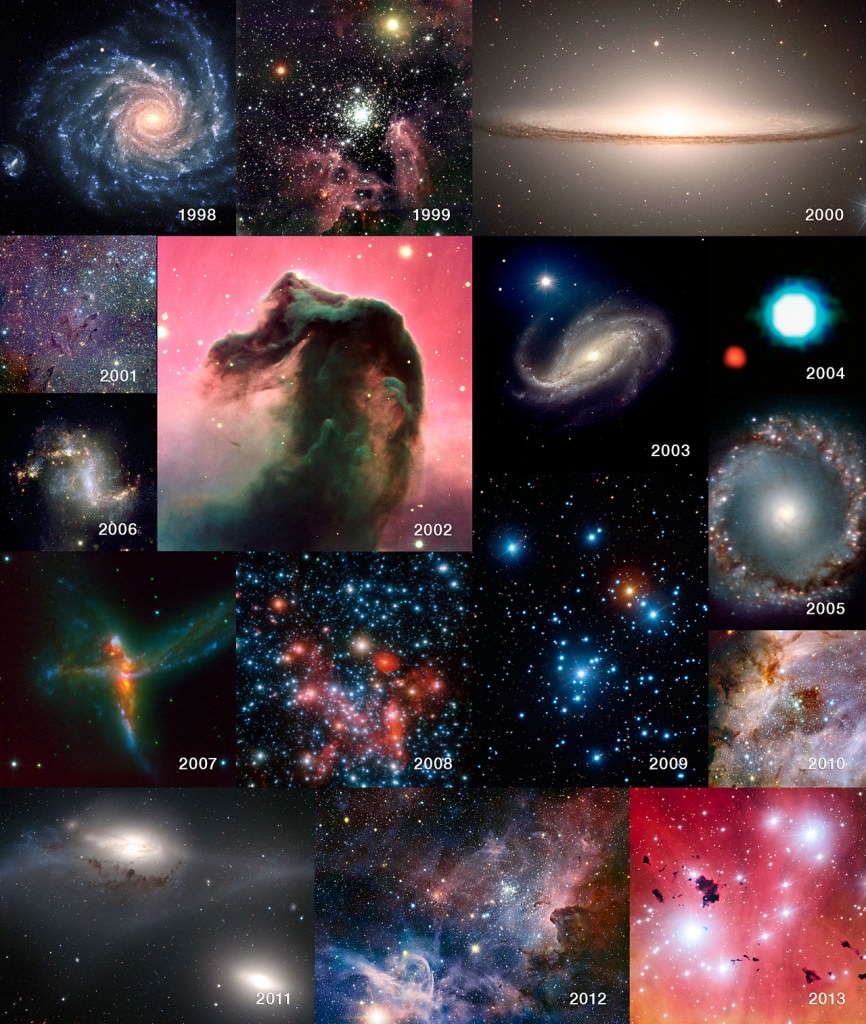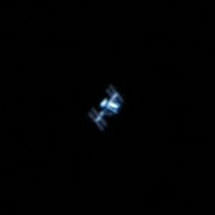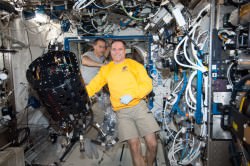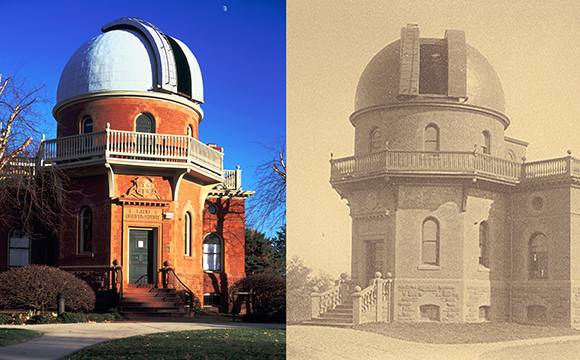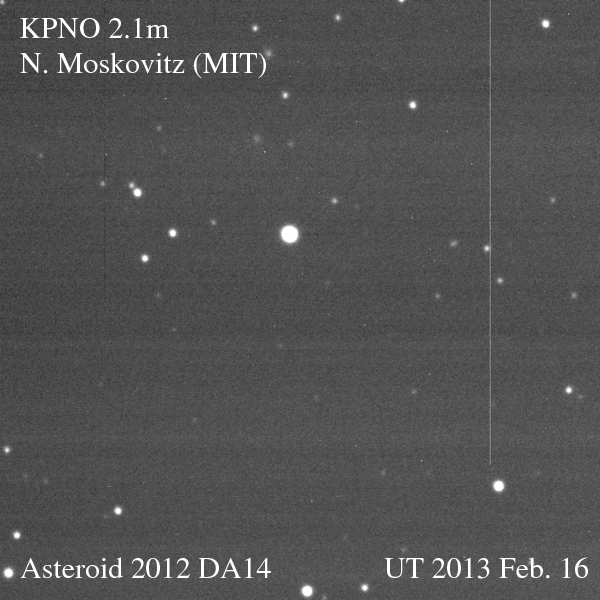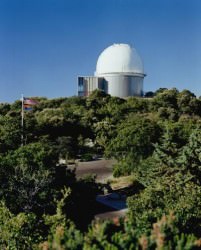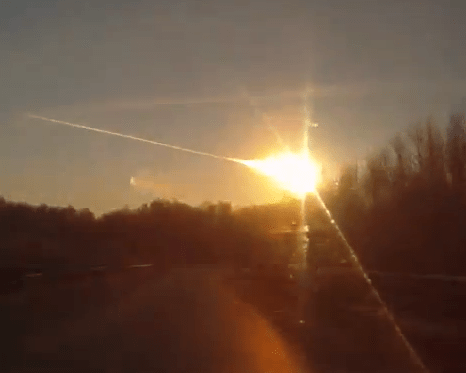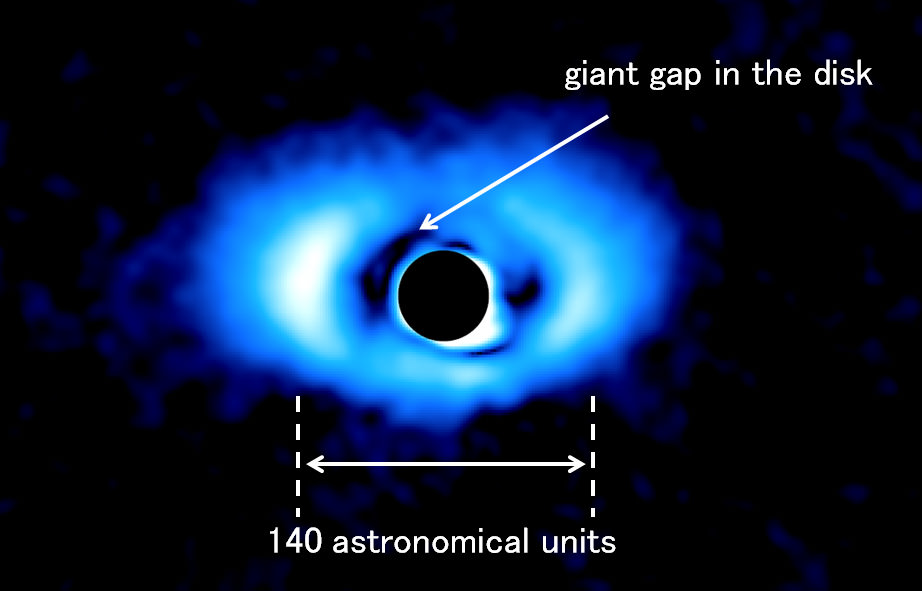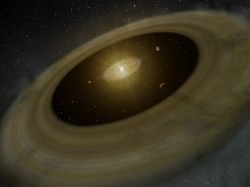One doesn’t take two cubesats and rub them together to make static electricity. Rather, you send them on a brief space voyage to low-earth orbit (LEO) and space them apart some distance and voilà, you have a telescope. That is the plan of NASA’s Goddard Space Flight Center engineers and also what has been imagined by several others.
Cubesats are one of the big crazes in the new space industry. But nearly all that have flown to-date are simple rudderless cubes taking photos when they are oriented correctly. The GSFC engineers are planning to give two cubes substantial control of their positions relative to each other and to the Universe surrounding them. With one holding a telescope and the other a disk to blot out the bright sun, their cubesat telescope will do what not even the Hubble Space Telescope is capable of and for far less money.
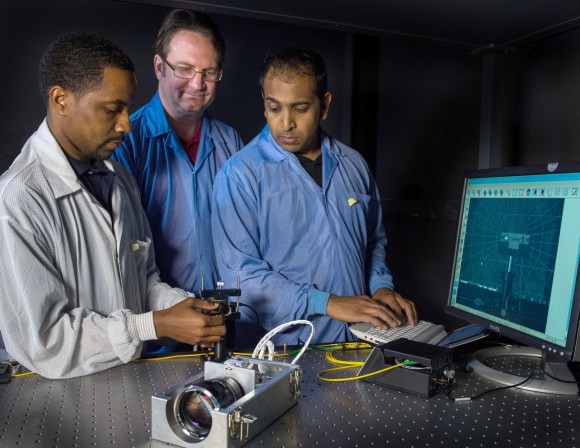
The 1U, the 3U, the 9U – these are all cubesats of different sizes. They all have in common the unit size of 1. A 1U cubesat is 10 x 10 x 10 centimeters cubed. A cube of this size will hold one liter of water (about one quart) which is one kilogram by weight. Or replace that water with hydrazine and you have very close to 1 kilogram of mono-propellent rocket fuel which can take a cubestat places.
GSFC aerospace engineers, led by Neerav Shah, don’t want to go far, they just want to look at things far away using two cubesats. Their design will use one as a telescope – some optics and a good detector –and the other cubesat will stand off about 20 meters, as they plan, and function as a coronagraph. The coronagraph cubesat will function as a sun mask, an occulting disk to block out the bright rays from the surface of the Sun so that the cubesat telescope can look with high resolution at the corona and the edge of the Sun. To these engineers, the challenge is keeping the two cubesats accurately aligned and pointing at their target.
Only dedicated Sun observing space telescopes such as SDO, STEREO and SOHO are capable of blocking out the Sun, but their coronagraphs are limited. Separating the coronagraph farther from the optics markedly improves how closely one can look at the edge of a bright object. With the corongraph mask closer to the optics, more bright light will still reach the optics and detectors and flood out what you really want to see. The technology Shah and his colleagues develop can be a pathfinder for future space telescopes that will search for distant planets around other stars – also using a coronagraph to reveal the otherwise hidden planets.
The engineers have received a $8.6-million investment from the Defense Advanced Research Project Agency (DARPA) and are working in collaboration with the Maryland-based Emergent Space Technologies.
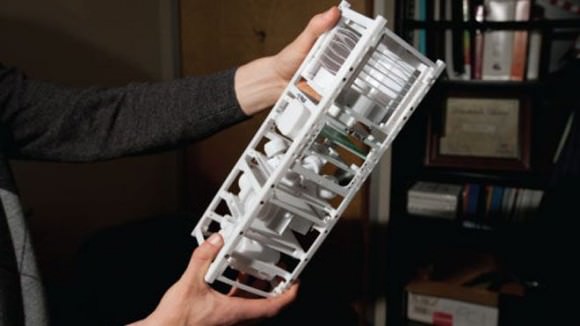
The challenge of GSFC engineers is giving two small cubesats guidance, navigation, and control (GN&C) as good as any standard spacecraft that has flown. They plan on using off-the-shelf technology and there are many small and even large companies developing and selling cubesat parts.
This is a sorting out period for the cubesat sector, if you will, of the new space industry. Sorting through the off-the-shelf components, the GSFC engineers led by Shah will pick the best in class. The parts they need are things like tiny sun sensors and star sensors, laser beams and tiny detectors of those beams, accelerometers, tiny gyroscopes or momentum wheels and also small propulsion systems. The cubesat industry is pretty close to having all these ready as standard issue. The question then is what do you do with tiny satellites in low-Earth orbit (LEO). Telescopes for earth-observing are already making headway and scopes for astronomy are next. There are also plans to venture out to interplanetary space with tiny and capable cubesat space probes.
Whether one can sustain a profit for a company built on cubesats remains a big question. Right now those building cubesats to customer specs are making a profit and those making the tiny picks and shovels for cubesats are making profits. The little industry may be overbuilt which in economic parlance might be only natural. Many small startups will fail. However, for researchers at universities and research organizations like NASA, cubesats have staying power because they reduce cost by their low mass and size, and the low cost of the components to make them function. The GSFC effort will determine how quickly cubesats begin to do real work in the field of astronomy. Controlling attitude and adding propulsion is the next big thing in cubesat development.
References:

